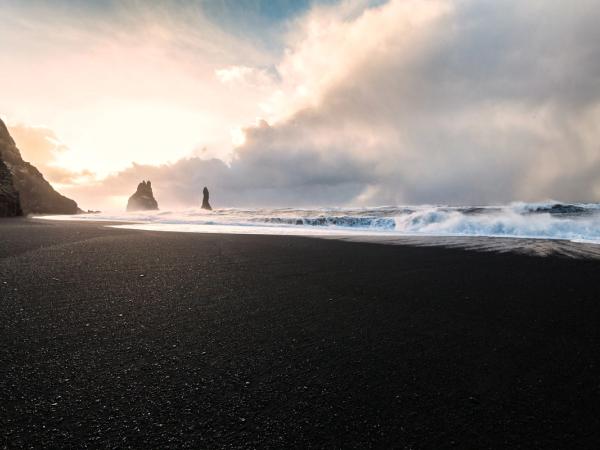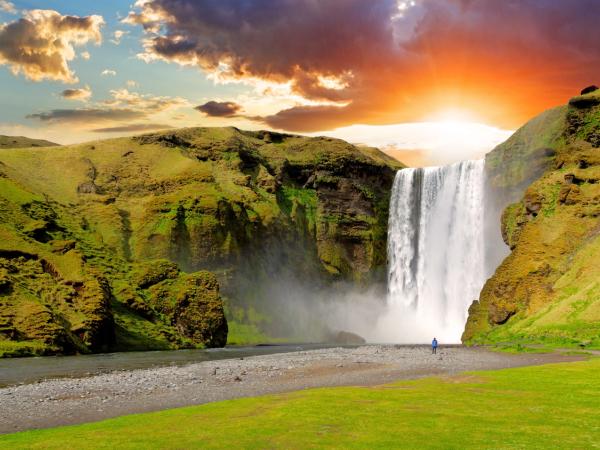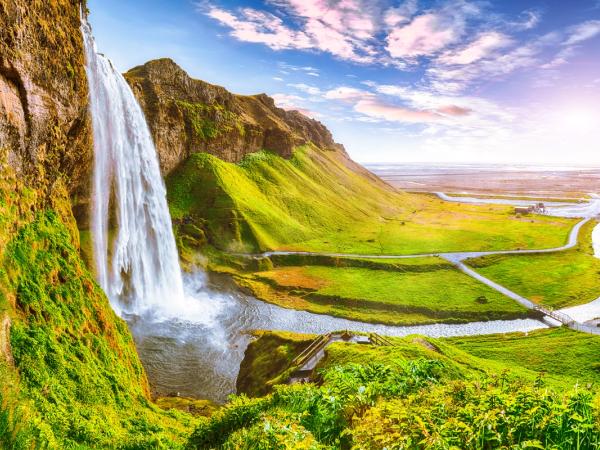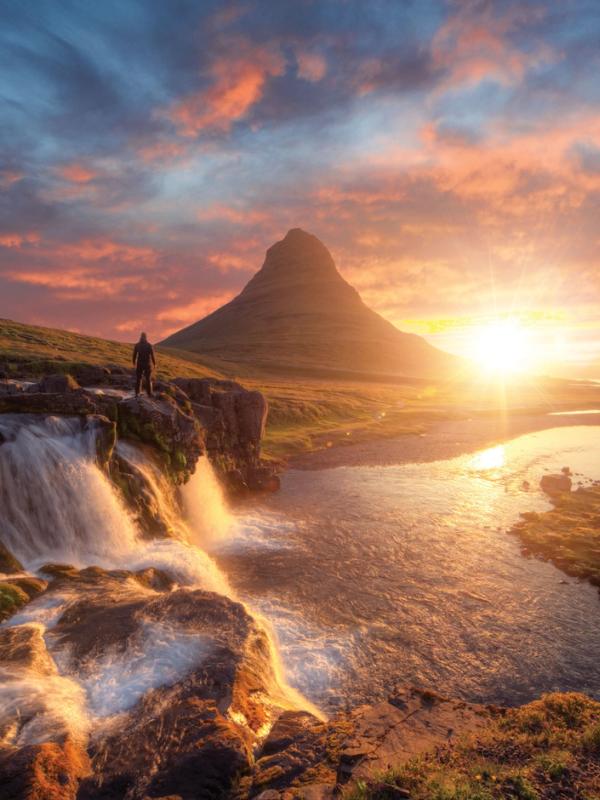
Solo Travel in Iceland: Your Guide to an Amazing Trip
Iceland is one of the safest places in the world, which makes it perfect for solo travelers. Its beautiful landscapes, peaceful vibe, and chances to unwind make it stand out. If you’re driving on your own or joining tours, this guide has everything you need for a fantastic trip. Let’s dive into why Iceland is great for solo travel, plus some handy tips and must-visit spots made just for you.
Why Solo Travel in Iceland is Awesome
Solo travel in Iceland gives you total freedom and a chance to grow, especially in such a calm and beautiful place. Here’s why it’s so special:
You’re in Charge
You decide everything. Want to catch a sunrise at a waterfall? Stay longer at a hot spring? Skip the busy tourist spots? You can do it all. Iceland is small, and the roads are easy to follow, so you can explore at your own speed and make the trip just how you like it.
Safe and Easy
Iceland has been ranked the safest country in the world since 2008, with almost no crime. If you’re hiking alone or walking in Reykjavik at night, you can wander around freely. Solo female travelers especially love the friendly and helpful locals, and since everyone speaks English, it’s simple to chat.
A Place to Reflect
Iceland’s wide-open spaces, like the quiet beaches of the South Coast, peaceful fjords in the West, or colossal lava fields, are perfect for thinking and relaxing. You can sit by a waterfall with a book, meditate on a cliff by the ocean, or write in your journal under the Northern Lights. Solo travel here isn’t just about seeing stuff; it’s about reconnecting with yourself. The calm, lonely vibe is great for reading, relaxing, and growing, leaving you refreshed and inspired.
Unplug and Recharge
Iceland’s far-off beauty helps you disconnect from daily life. With spotty cell service in some areas, you can focus on the moment, like watching a geyser shoot up or listening to the quiet of a glacier. This break is a rare treat for solo travelers looking for peace and a chance to recharge.
It's Easier to Meet Fellow Travelers
Chances are you came alone because you were looking for the perks of solitude, which are many. However, if you want to meet people, traveling solo is the way to go.
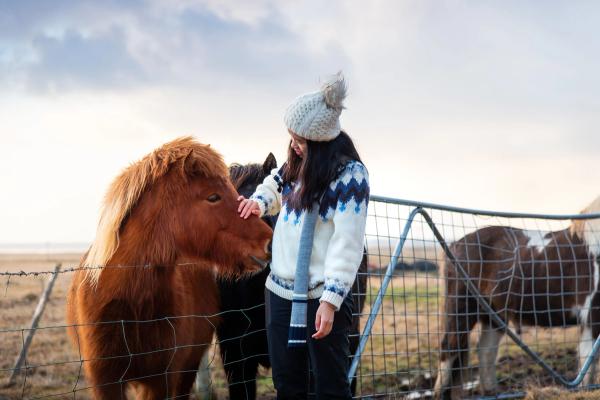
Tips for Solo Travel in Iceland
Planning a solo trip to Iceland takes some handy tips to keep your journey safe and smooth, especially since the country’s nature can be wild and tricky:
Safety First: Tell Someone Your Plans
Iceland is almost crime-free, but the natural elements can be challenging. Always inform someone about your whereabouts, such as a hostel worker, a friend back home, or a café owner, particularly if you’re hiking or driving to remote areas. This is especially important for solo travelers. Download the 112 Iceland app for emergencies and road updates; it’s super helpful when you’re on your own.
Prepare for the Weather
Iceland’s weather changes quickly. Bring a waterproof jacket, tough hiking boots, and layers like warm thermals. Summer has long days, so pack an eye mask for sleep. Winter is great for the Northern Lights but cold, so bring warm gear. Check Vedur daily to dodge storms or strong winds, which can be risky in far-off spots.
Getting Around
Public buses run in Reykjavik and connect to major attractions like the Golden Circle, but they’re rare elsewhere. Guided tours are excellent for visiting places like Jökulsárlón or the Blue Lagoon and allow you to meet others. Renting a car, though, gives you total freedom to explore. If you’re driving, check road conditions at road.is and consider a 4x4 for more rugged routes.
Save Money
Iceland can be pricey, but you can save. Cook meals from grocery stores like Bónus, and enjoy free sights like waterfalls, geysers, and beaches. Stay in hostels or guesthouses; they’re cheap and friendly. Cafés in Reykjavik or group tours are great for a quick chat without losing your solo vibe.
Respect Locals and Nature
Everyone in Iceland speaks English, but saying “takk” (thanks) in Icelandic is nice. Stick to marked paths and don’t mess with nature to keep Iceland beautiful. Be careful around wildlife, like puffins or arctic foxes, and keep your distance.
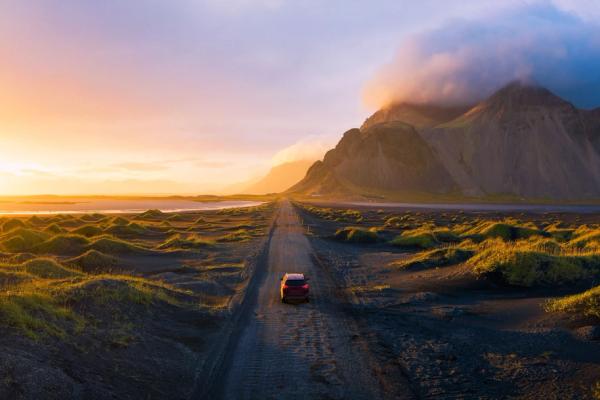
Picking the Right Vehicle for Solo Travel
Choosing the right vehicle is essential for your solo trip. It must fit your plans, budget, and how you want to see Iceland. Let’s break down your options for main roads or far-off areas.
Car or Campervan: What Works for You?
First, decide between a car or a campervan. A car is comfy and works well with hotels or hostels, where you can sleep in a real bed after driving. You get to your spot, check-in, and relax. A campervan, though, combines your ride and place to stay, saving money on hotels. It also gives you more alone time; park by a quiet waterfall or fjord and enjoy the view. Cars are simple and comfy; campervans save money and let you decide more freely. Think about what matters most: a set place to stay or the freedom to pick where to sleep each night.
Choose a Vehicle that Fits Your Plans
Your plans decide the vehicle you need. If you stick to main routes like the Golden Circle or Ring Road, a basic car is fine. These roads are paved and easy, perfect for places like Gullfoss or Vík. But if you explore the Highlands or far-off spots like the Westfjords, a 4x4 is a must. These areas have gravel roads and mountain tracks, like the F-roads, which need better grip, especially in rough weather. Since you’re solo, pick a vehicle that matches your route to avoid trouble.
Budget or Comfort?
Your budget plays a big role. To save, compact cars like a Hyundai i10 or Kia Ceed are cheap to rent, around $45/day, good on gas, and great for short trips like the South Coast. For campervans, a small one like the Go Smart Budget Camper from Go Campers keeps costs low and works for solo travelers. If money isn’t an issue, go for comfy cars like a Dacia Duster or Suzuki Jimny; these handle light off-road spots and give a smoother ride on long drives. For campervans, a bigger one like the Go Campers Three-Plus Sleeping Spots gives you extra space and features, which is nice if you want more room. Pick a vehicle that fits your needs and keeps your trip easy.
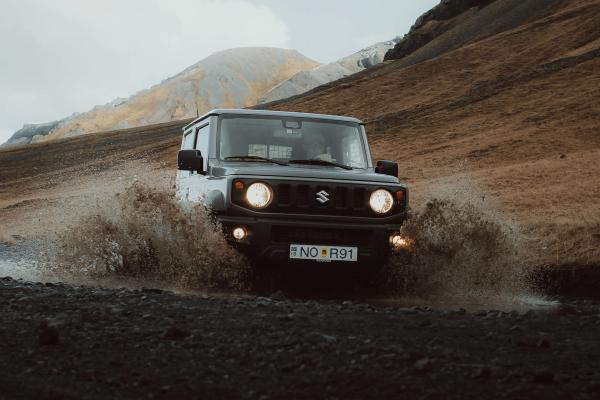
Budgeting for Solo Travel
Solo travel in Iceland can feel expensive since you’re not splitting costs, but with thoughtful planning, you can keep it cheap and still have a great trip. Iceland is known for high prices; food, lodging, and activities add up, but here’s how to enjoy it without breaking the bank.
Getting Around
Transport is a big part of your budget. Renting a car can save money compared to guided tours, which often cost $100+ per day. Gas is around $2 to $2.30 per liter, so a small car keeps costs low on shorter routes like the Golden Circle. If driving isn’t your thing, public buses like Strætó connect Reykjavik to nearby spots for $5 to $10 a ride, and group tours, around $50 to $80, cover places like the South Coast cheaper than private options.
Where to Stay
Lodging doesn’t have to be expensive. Skip fancy hotels. Hostels or guesthouses with shared kitchens cost $30 to $60 a night and are great for solo travelers. Renting a campervan is another way to save, as it combines your ride and place to stay. Camper rentals cost more than cars, but campsites are cheap, $10 to $18 per night. Plus, you can sleep in beautiful natural spots, which is a big bonus.
Eating
Eating out is pricey; a basic meal costs $20 to $30. Buy food from grocery stores like Bónus or Krónan instead. You can get bread, cheese, and skyr for under $10 a day. Cooking your own meals saves a lot, and it’s easy in hostel kitchens or with a campervan stove. The same goes for drinks: a beer in a pub costs $8 to $10, but you can find cheaper options at state-run stores like Vínbúðin, where the most affordable beer is around $3.35.
Activities
Many natural sights, like waterfalls and geysers, are free, but extras like the Blue Lagoon or glacier hikes, are close to $100+, which adds up. Book early for deals, or pick just one big activity to keep your budget in check. Focus on the free activities, which are, in reality, the most special.
Timing Your Trip
Travel in shoulder seasons, May or September, when prices drop and crowds are smaller. Flights, rentals, and accommodations are more affordable, and you can still get great weather and see the Northern Lights. With these tips, you can keep your daily budget around $100 to $150, leaving room to enjoy Iceland your way without stress.
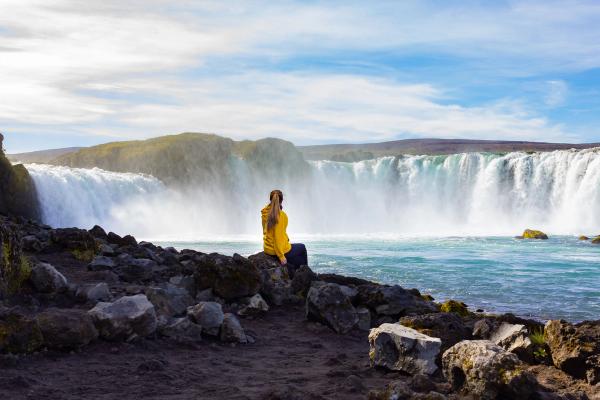
What to Pack for Solo Travel
Packing smart is key when traveling solo in Iceland. No one’s there to help if you forget something! The weather and remoteness mean you need to be ready. Here’s a list of must-haves to keep your trip smooth, safe, and fun.
- First Aid Kit: Bring a small first aid kit with bandages, pain relievers, antiseptic wipes, and any personal meds. Blisters from hiking or a headache after a windy day happen. Iceland’s rough terrain can surprise you, so having this means you’re ready for small injuries without hunting for a pharmacy.
- Power Bank: A power bank keeps your devices charged, especially in far-off areas with few outlets. Get one with at least 10,000 mAh to recharge your phone or camera several times. It’s perfect for long days on the Ring Road or capturing shots at Jökulsárlón. Charge it each night to stay charged.
- Power Strip: Bring a power strip to charge multiple devices at once, such as your phone, power bank, camera, and more. Hostels and guesthouses often have few outlets, and a small strip with a few slots keeps everything running smoothly.
- Phone with Good Connectivity and Data: Your phone is your lifeline, so make sure it works in Iceland. Most big carriers do but check yours. Buy a mobile data plan, 10GB is enough for a week, for maps, weather apps like vedur.is, and the 112 Iceland app. Wi-Fi is spotty outside Reykjavik, so data is key for staying connected.
- Books or a Diary: Solo travel is great for personal time, and Iceland’s peaceful vibe makes it even better. Pack a book, maybe an Icelandic story, or a diary to write your thoughts while sitting by a waterfall or fjord. It’s a great way to relax, think, and remember your trip, especially during quiet nights in a hostel or campervan.
- Emergency Device for Hiking: If you’re hiking alone, an emergency device like a satellite communicator, such as Garmin inReach, is key. It sends a distress signal even without GPS or cell service, which is vital in far-off areas like the Westfjords or highlands. Always tell someone your route daily; Iceland’s wilderness is beautiful but can be challenging.
- Camera: A camera is your best buddy in Iceland’s incredible landscapes. Waterfalls, glaciers, and volcanic beaches are all worth capturing. If it’s a fancy DSLR or a simple point-and-shoot, it saves your solo moments, like the Northern Lights or a puffin on a cliff. Your phone works too, but a camera with a spare battery is better for long days out.
- Extras: To complete your kit, add a reusable water bottle since Iceland’s tap water is great, a headlamp for winter’s short days or late-night Northern Lights hunts, and a waterproof bag to keep gear dry in sudden rain. These small things make a big difference when you’re on your own.
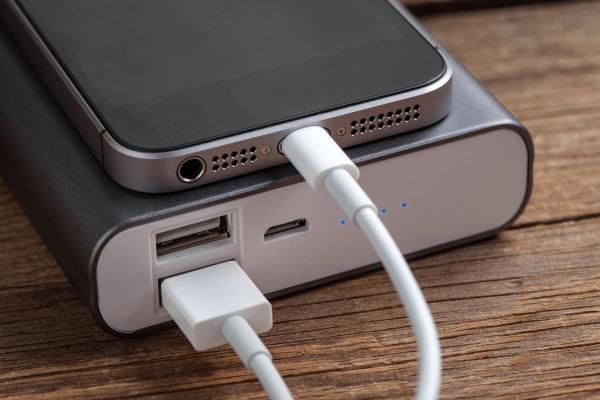
Must-See Routes and Spots for Solo Travelers
Iceland’s landscapes are amazing, and solo travel lets you enjoy them your way. Here are the best routes and spots with tips just for you. If you’re driving or joining a tour, these places offer adventure, beauty, and the quiet you’re looking for.
Golden Circle
The Golden Circle is a 300-km loop from Reykjavik with three big stops: Þingvellir National Park, Geysir hot springs, and Gullfoss waterfall. At Þingvellir, a UNESCO site, you can walk between tectonic plates and feel the earth’s power. Geysir has Strokkur, a geyser that shoots up every few minutes, which is neat to watch alone. Gullfoss, with its big cascade, lets you stand close enough to feel the mist, perfect for soaking in Iceland’s energy by yourself.
This route is great for solo travelers because it’s an easy day trip on paved roads, ideal for first-timers or those short on time. The sights are clear, so you won’t get lost, and you can stay as long as you want and enjoy a quiet moment by Gullfoss with a coffee. Go early or late to avoid crowds, and if you’re driving, a small car is fine since the roads are smooth. Tours are available too. Just pack snacks and water, as stops are limited.
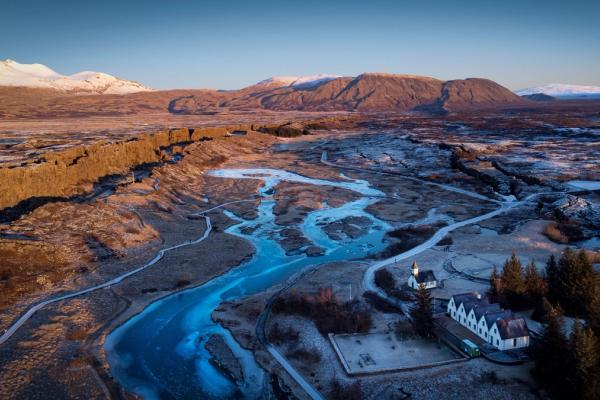
Ring Road
The Ring Road is a 1,332-km loop around the whole country, showing off Iceland’s different landscapes, from Vík’s black sand beaches to Akureyri’s cozy town and the steamy pools of Mývatn. You’ll find cool spots like Stuðlagil Canyon with its bright blue waters or the odd Hvítserkur rock sticking out of the sea, with many chances to stop and check out whatever you like on this 7 to 10-day trip.
It’s perfect for solo travelers because you can stop anytime to take in the view, grab a snack at a roadside café, or detour to hidden gems like the Eastfjords. Take your time; there’s no rush. Summer offers easy, open roads, while winter transforms the landscape with snow, although the roads can get a bit icy. Make sure to inform someone of your plans each day, especially in remote areas, and think about a 4x4 for bumpy parts, though you can manage without one on the main road.
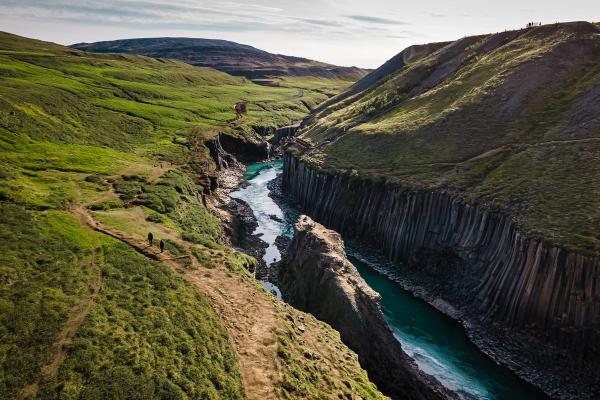
South Coast
The South Coast is a cool route with highlights like Reynisfjara, the Jökulsárlón glacier lagoon, and Skógafoss waterfall. Reynisfjara’s basalt columns and big waves are amazing but stay back from the water’s edge. Skógafoss lets you climb stairs for a nice view. Jökulsárlón has floating icebergs, which are great for a solo kayak paddle.
This route is perfect for solo travelers because it’s close to Reykjavik and packed with spots for photos or quiet thinking. Standing alone at Reynisfjara feels special. Tours hit this area a lot, but if you have your own vehicle you hang out longer and see Seljalandsfoss at sunset when it’s less busy. Pack warm layers for the wind, and check wave warnings at Reynisfjara for safety since the ocean can be wild. Driving or joining a tour both work to see some of Iceland’s best destinations.
Snæfellsnes Peninsula
The Snæfellsnes Peninsula is called “Iceland in miniature,” with a mix of places like the Snæfellsjökull glacier, the super-photographed Kirkjufell mountain, and cute fishing villages like Arnarstapi. Its rough beaches, tall cliffs, and lava fields feel awesome, with plenty of spots to walk around or just look in wonder.
Solo travelers like it here because it’s quieter than the big routes and awesome for peaceful hikes or slow walks by the coast alone. You can drive the loop in a day or two, stopping for pictures or a break wherever you want. Buses don’t come much, so a car is best. A small car works for paved roads, but a 4x4 is better for gravel paths. Summer brings green hills, and winter turns it into a snowy wonderland worth checking out.
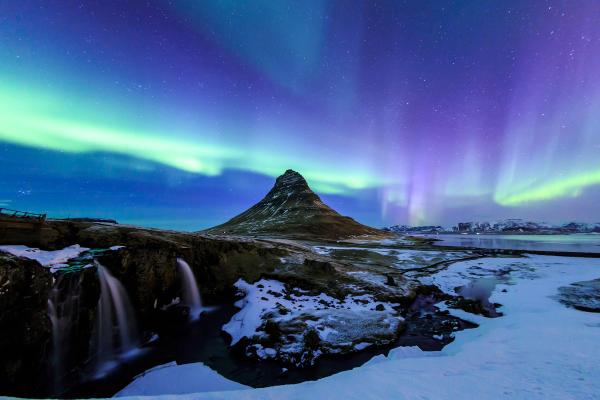
Westfjords
The Westfjords are a rough, out-of-the-way area with steep cliffs, hot springs like Hellulaug, and the impressive Dynjandi waterfall. It’s pure Iceland at its best, with twisty fjords, tiny villages, and views that make you feel like the only person around, surrounded by wild beauty.
This spot is great for solo travelers who want real alone time, just you and nature, and it's perfect for thinking or taking pictures without anyone around. The roads twist a lot, so go slow. If you’re coming here, renting a 4x4 is smart, especially in winter when things get tough. Tell someone your plans daily since cell service is spotty, and pack snacks and extra fuel because services are few. Summer makes it easier to get around, and winter’s big cliffs and snow create a cool vibe if you’re prepared.
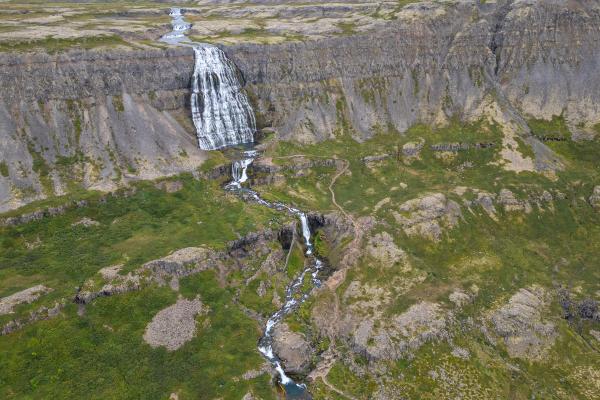
Final Thoughts
Solo travel in Iceland is all about freedom, safety, and awesome moments. You can chase waterfalls, relax by a fjord, or enjoy the quiet and find your own path here. With tips for safety, budgeting, and picking the right vehicle, this guide helps you explore Iceland with confidence. The country’s calm vibe invites thinking, and its wild beauty pushes you to enjoy the adventure. Iceland is waiting, so go make it yours!

